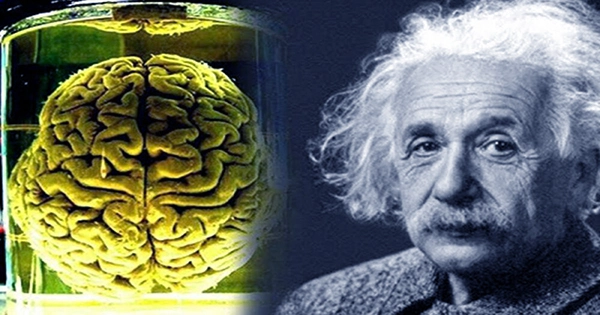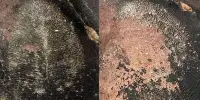One of science’s most astonishing brains was preserved in a box marked “Costa Cider” behind a beer cooler in a man’s lab for longer than you’d think—by some years.
Albert Einstein was transported to Princeton Hospital on April 17, 1955, at the age of 76, suffering from internal bleeding brought on by an abdominal aortic aneurysm that would ultimately cause his death the following day. He reportedly said to his family and medical staff, refusing surgery: “I want to go when I want. Artificially extending life is tasteless. I’ve done my fair share; now it’s time to leave. I’ll execute it tastefully.” He passed away early on April 18 and was heard murmuring in German by a nurse who, sadly, did not speak the language.
“I want to be cremated so that people don’t come worship at my bones,” Einstein said to his biographer.” As a result, his body was incinerated following the autopsy, and his ashes were dispersed at a secret location to prevent anyone from going to his final resting place. However, after the cremation, his family discovered that the body had not been entirely cremated: pathologist Dr. Thomas Harvey had sawed open Einstein’s skull during the autopsy and taken out the brain for examination.
Even more contentious, Harvey preserved the majority of the brain in a jar for a considerable amount of time—in fact, 45 years.
As may be expected, the removal of his father’s brain without his consent did not go over well with Einstein’s son. Harvey was successful in persuading him to grant permission for the study of the brain in order to determine what made his mind so smart and that he would publish his findings soon.
However, there were no future academic articles on Einstein’s brain. It wasn’t until 1978, when New Jersey Monthly reporter Steven Levy conducted research and visited Harvey, that it was made evident what had happened to the brain.
Harvey had the brain weighed, measured, photographed, and ordered paintings of it. At the University of Pennsylvania in Philadelphia, he had also been in charge of organizing its division and storage, dividing it into 240 blocks and 12 sets of 200 tissue sample slides. He had donated brain samples for research, and at first he discovered little to no difference between them and non-Einstein brains. Anything that would demonstrate why Einstein was far smarter than the typical non-Einstein, at the very least.
The US army, he claimed, requested to see the samples, but he kept them secure and wouldn’t allow them to be taken. Harvey received numerous requests for a sample of Einstein’s brain shortly after Levy’s paper was published, including one from neuroanatomist Marian Diamond of the University of California, Berkeley. Harvey sent Diamond four samples of the brain in the size of sugar cubes in a container formerly used to store Kraft Miracle Whip mayonnaise. Before Harvey donated the brain to the University Medical Center at Princeton in 2004, other samples were sent to other researchers.
What can we conclude from Einstein’s stolen brain then? Unfortunately, not much, and what we have learned definitely has to be seen with a good dose of skepticism, or at the very least observed while mentally repeating the phrase “correlation does not equal causation” to yourself.
The Mütter Institute, which is now home to samples of Einstein’s brain, told the Smithsonian that there is “a night-and-day difference” between a living brain and a dead brain. “You can learn and study an infinite number of things about a living brain. What you can learn from a dead brain is quite limited.”
After receiving the sample in a container that resembled a mayo clinic, Diamond published a paper in 1985 revealing that Einstein’s brain had a higher proportion of glial cells, especially in areas thought to be involved in imagery and complex thought. A subsequent study in 1996 also revealed that Einstein’s neurons were more densely packed than those of controls.
However, there is only so much you can infer from this given that we are unsure of whether these differences were present from birth and aided in his thinking or whether they emerged as a result of his challenging work.
“You can’t just take one brain from someone who is unique, which is pretty much all of us, and say, “Ah-ha! I’ve discovered what motivates T Hines to collect stamps! “Terence Hines, a psychotherapist, told the BBC in 2015.
“If you have the belief that stamp collecting was brought on by a unique brain phenomenon and you examined my brain in comparison to 100 other brains, you might notice something unique and exclaim, “Ah-ha! The epicenter of stamp collecting has been located. And it is false.”
Harvey’s decision to steal Einstein’s brain did not help his career, and as a result, he was fired from the hospital in Princeton. What was his justification for taking it, exactly?














